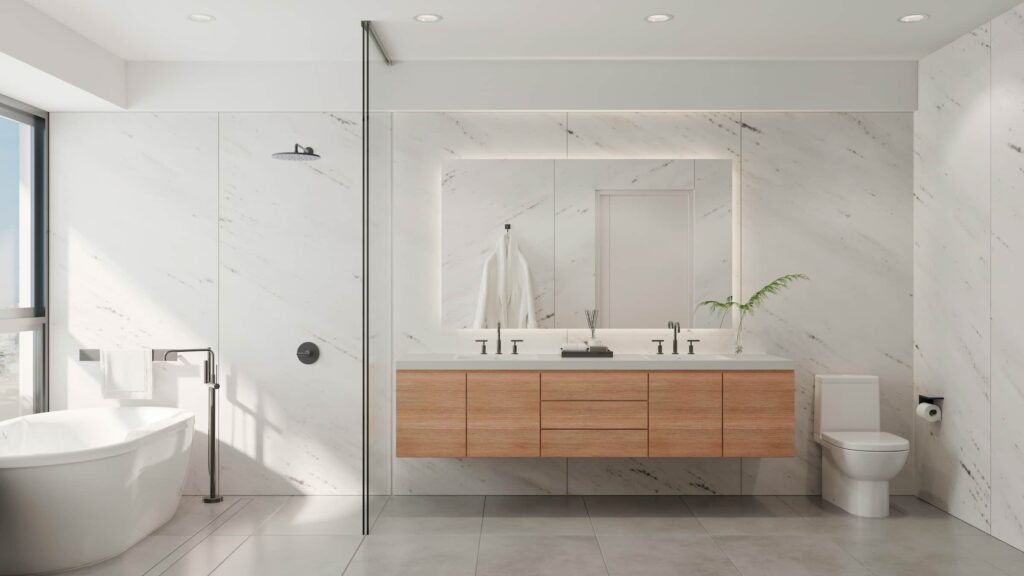In today’s fast-paced world, we often overlook the subtle features that define our experience in public spaces. One such underrated yet essential element is the design of commercial washrooms. Whether it’s a trendy restaurant, a bustling airport, or a quiet office building, the layout and function of a washroom say a lot about the business. As someone who frequently visits various commercial spaces, I’ve come to realize how much difference a well-planned washroom can make—not just in comfort, but also in perception.
I recently dove into the world of commercial washroom design while consulting for a small café revamp, and what I learned completely changed how I view these spaces. It’s not just about good looks—it’s about accessibility, hygiene, and a sense of care that reflects the brand’s values.
Why Commercial Washroom Design Matters
If you’ve ever been in a public restroom that made you cringe, you understand why this topic matters. A poorly maintained or awkwardly designed washroom can leave a lasting negative impression. On the flip side, a thoughtfully planned one can actually elevate a business’s reputation. Customers remember how a space made them feel, and that includes the bathrooms.
It’s about more than just aesthetics. Good commercial washroom design blends form and function, creating a space that is not only visually appealing but also efficient, hygienic, and inclusive. In many ways, the washroom is the unsung hero of a commercial property—it can even influence customer retention.
Key Elements of Effective Washroom Design
From my experience and research, here are some essential features that should be considered when designing or renovating a commercial washroom:
1. Accessibility
Inclusivity should be at the forefront of design. This means adhering to legal standards for accessible facilities, but also going beyond minimum requirements. Wider stalls, handrails, touchless features, and braille signage can make a world of difference for people with different needs.
2. Touchless Technology
Especially in a post-COVID world, hygiene is paramount. Touchless faucets, soap dispensers, and flushing systems reduce the spread of germs and elevate the user experience. Motion-sensor lighting and automated air fresheners are also small upgrades that add convenience.
3. Efficient Layout
A great commercial washroom isn’t just a collection of fixtures—it’s a coordinated space. Traffic flow matters. A well-laid-out design ensures privacy, reduces crowding, and keeps things moving efficiently, even during peak hours.
4. High-Quality Materials
Durability should never be compromised. Materials must withstand high usage, be easy to clean, and still look good over time. Think solid surface countertops, stainless steel accessories, and water-resistant wall panels. These materials also reflect a level of professionalism that users notice.
5. Brand Cohesion
Surprisingly, washrooms can reinforce a brand’s identity. A boutique hotel might use upscale finishes and ambient lighting, while a modern co-working space might opt for minimalist lines and eco-friendly materials. Commercial washroom design offers a chance to subtly extend the brand’s story.
Trends Shaping Modern Commercial Washrooms
Design trends are evolving, and commercial spaces are getting more creative with their washrooms. Here are a few popular trends I’ve seen recently:
-
Biophilic Design: Incorporating natural materials, greenery, and even daylight where possible to create a calming atmosphere.
-
Sustainability: Low-flow toilets, water-saving faucets, and LED lighting not only cut utility costs but also reflect environmental responsibility.
-
Gender-Neutral Facilities: More businesses are opting for inclusive, individual stalls with shared sinks to accommodate all users comfortably and safely.
Commercial Washrooms as a Business Strategy
It may sound odd at first, but investing in good washroom design can actually be part of a smart business strategy. From hotels and gyms to restaurants and malls, user satisfaction often hinges on small details. A clean, functional, and well-designed washroom shows that a business values its customers and employees alike.
Moreover, these spaces are often reviewed online—yes, even the bathrooms. Customers don’t hesitate to mention them in Google and Yelp reviews. Why risk a negative comment when you could turn a basic necessity into a standout feature?
Final Thoughts
When you think about improving a commercial space, don’t let the washroom be an afterthought. It’s one of the few areas every visitor is likely to use, and its design has the power to shape their impression of the entire establishment.
In my journey to learn more about commercial washroom design, I’ve come to appreciate the layers of thought and planning that go into crafting these essential spaces. From hygiene and accessibility to style and sustainability, the choices we make in the design phase truly echo in the daily experiences of users.
If you’re renovating or building a commercial space, I highly recommend giving this area the attention it deserves. Your customers—and your reputation—will thank you.
- How Thoughtful Washroom Design Enhances the User Experience in Commercial Spaces
- Discover how thoughtful commercial washroom design can enhance user experience, improve hygiene, and reflect your brand. Learn key features and trends to consider for your next renovation.
- Washroom Design
Related posts:
 Why KBH Games Is Perfect for Family-Friendly Online Entertainment
Why KBH Games Is Perfect for Family-Friendly Online Entertainment
 Build a Seamless School Portal with These Powerful Templates
Build a Seamless School Portal with These Powerful Templates
 7 Ways Aerospace Companies Are Using Composites to Elevate Aerial Robotics
7 Ways Aerospace Companies Are Using Composites to Elevate Aerial Robotics
 Samsung Galaxy S24 Ultra Price in Pakistan: A Closer Look at the Mid-Range Marvel
Samsung Galaxy S24 Ultra Price in Pakistan: A Closer Look at the Mid-Range Marvel
 The Ultimate Web Development Checklist for Building High-Performance Digital Experiences
The Ultimate Web Development Checklist for Building High-Performance Digital Experiences
 Top App Development Agency UK – Transforming Ideas into Apps
Top App Development Agency UK – Transforming Ideas into Apps
 Transforming Oil and Gas Operations in Qatar with Microsoft Dynamics 365 Supply Chain Management
Transforming Oil and Gas Operations in Qatar with Microsoft Dynamics 365 Supply Chain Management
 How to Optimize IPTV Streaming Performance on Dedicated Servers
How to Optimize IPTV Streaming Performance on Dedicated Servers








